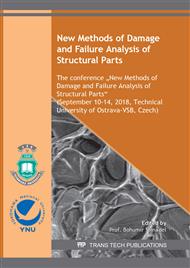p.95
p.101
p.107
p.113
p.119
p.125
p.131
p.137
p.143
Enhanced Disintegration of Silicon Particles due to their Mutual Impact Caused by Ultrasonic Cavitation Bubbles
Abstract:
Fast development of nanotechnology leads to the top-down preparation of nanoparticles by various disintegration techniques taking a major part in the industrial sector. A very promising way seems to be the use of cavitation implosions. In our approach, the main mechanism of this type of disintegration is based on mutual collisions of solid microparticles in dense dispersions, powered by implosions of vapour cavitation bubbles generated between the particles.This paper presents experimental results of the disintegration of silicon microparticles to the sub-micron scale. In our experiments, the primary silicon particles of mean size of 5927 nm were reduced to 160 nm and 736 nm by the ultrasonic disintegration process after 240 minutes and at the ultrasonic frequency of 32 kHz. We also present a phenomenological model of particles erosive disintegration where particle fragments are approximated by spheres of equivalent volume. This model allows us to calculate the energy needed for successful disintegration of primary microparticles by measuring the particle size distribution. Thus, we can estimate the minimal energy conserved in the cavitation bubble alongside with its radius at a normal pressure of the surrounding liquid.
Info:
Periodical:
Pages:
131-136
Citation:
Online since:
July 2019
Authors:
Keywords:
Price:
Сopyright:
© 2019 Trans Tech Publications Ltd. All Rights Reserved
Share:
Citation:


